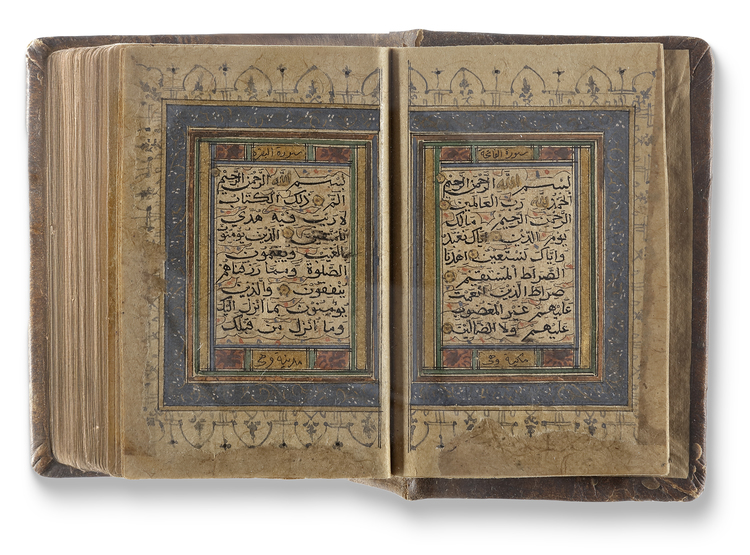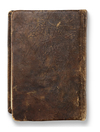Lot 74 AN ILLUMINATED SULTANATE QURAN, NORTH INDIA, 16TH CENTURY
A complete Quran, Arabic manuscript on paper, Each folio contains 17 lines in black Bihari script, with the word Allah highlighted in gold. The text is ruled with red and blue borders, with tajwīd markings in red ink and gold rosette verse markers accented by blue dots. Sura headings, along with the number of verses, are inscribed in black Thuluth script on illuminated polychrome panels.
Polychrome and gold marginal medallions denote Juz’, Hizb, and other textual divisions. The two opening bifolia are richly decorated with polychrome designs framing 11 lines of text within cloud bands; the final two pages of the Qur’an are similarly adorned.
Bound in a later morocco leather binding.
7.5 by 11.5 cm.
CATALOGUE NOTE This refined North Indian Quran manuscript, dating to the 16th-century Sultanate period, exemplifies the rich artistic and devotional traditions of the region. The use of Bihari script—characterized by its bold, angular forms—reflects a localized calligraphic tradition prized for Qur’anic transcription. The restrained yet elegant illumination, with gold and polychrome marginal medallions and architecturally framed sura headings, demonstrates a sophisticated fusion of Persianate and Indian artistic influences.
Its small size suggests the manuscript was intended for personal use, easily carried during travel for devotional recitation or kept as a talismanic object for spiritual protection. Despite its intimate scale, the careful page layout and refined palette indicate patronage by a learned elite, possibly a regional ruler or scholar.
This Quran is a testament to the vibrant manuscript culture of late Sultanate India, revealing an artistic heritage that laid the groundwork for the later grandeur of Mughal manuscript arts.




